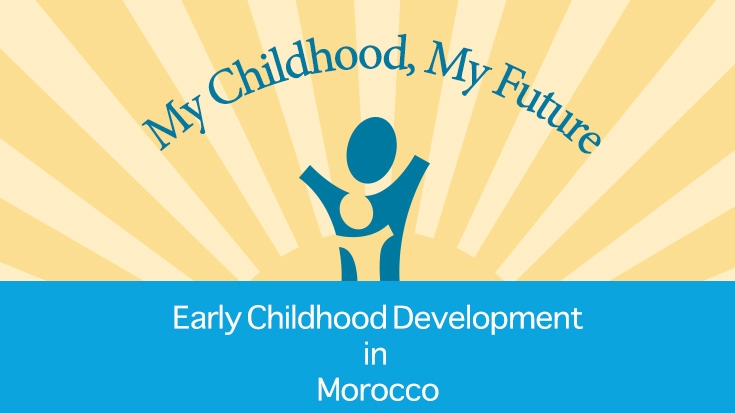The status of Early Childhood Development (ECD) in Morocco
- A third of children receive no prenatal care, two-thirds do not receive regular prenatal care, and a third are born without the presence of a skilled birth attendant.
- Deaths in the first month (2.5%) and year (3.8%) of life are higher than the regional averages (1.5% and 2.4%, respectively).
- Most (90%) children are fully immunized at age 1.
- Almost a quarter (23%) of children are stunted, and 1 in 10 children are underweight.
Figure 1. Early childhood development indicators for Morocco (%)
Source: Authors’ calculations based on Morocco DHS 2004
Children in Morocco have very different opportunities of healthy development based on factors beyond their control.
There are substantial differences in the opportunities children have for healthy development and of accumulating human capital. Early childhood is when cycles of poverty and inequality are transmitted across generations. Children tend to be consistently advantaged or disadvantaged across a variety of different dimensions of ECD, and can face very different life chances based on just a few family background characteristics. If we observe a child who has illiterate parents, is from the poorest fifth of households, has a mother with problems accessing health care, and who lives in rural Tensift in Morocco (a “least advantaged” child), and compare that child to one whose parents have higher education, who is from the richest fifth of households, whose mother has little trouble accessing health care, and who lives in urban, central Morocco (a “most advantaged” child), we find they have different chances of healthy early childhood development. Figure 2 presents the chances of different ECD indicators for these “least advantaged” and “most advantaged” individuals.
For every indicator, the least advantaged child faces poorer ECD. The most advantaged child is almost three times more likely to receive prenatal care (37% against 99%) and more than three times as likely to have a trained attendant at his/her delivery (27% against 100%). The least advantaged child is more than twice as likely to die in the first month of life, and more than four times as likely to die in the first year of life. There is a 14 percentage point gap in immunization coverage between the least and most advantaged child. But some of the largest gaps are in terms of nutritional indicators. While the most advantaged child has an 11% chance of being stunted, the least advantaged child has a 38% chance. Gaps in weight are even larger: while the chances of a most advantaged child being underweight are just 2%, the chances of a least advantaged child being underweight are 25%. Gaps are slightly smaller for being wasted, but a least advantaged child is still more than four times as likely to be wasted.
Figure 2. Inequality in the chances for healthy early childhood development (%)
Source: Authors’ simulations of chances for a “most advantaged” and a “least advantaged” child based on calculations using Morocco DHS 2004.


